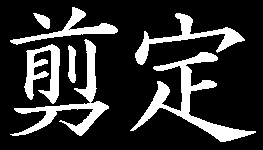|
Pruning Pines
Tree
pruning is very definitely a skill possessed by ALL successful Japanese
gardeners. And of all the different types of skills used in pruning trees,
the ability to skillfully prune pine trees is considered to be a key litmus
test of a professional Japanese gardener's skill.
Japanese gardens almost always include a few specimen trees, and the tree most commonly used in this role is the Japanese black pine. Because specimen pines receive extra scrutiny by garden visitors, they receive detailed care such as bud manipulation, candling, needle grooming, and bark removal and cleaning.
JOJG runs regular articles about pruning pines. In addition to the techniques mentioned above, JOJG publishes articles about pruning white pine, pruning hemlock trees, pruning spruce trees, mugo pine pruning, and, of course, articles about how to prune Japanese black pine trees. Some sample articles are posted below for your review.
---------------------------------------------------------------
FROM SEEDLING TO SPECIMEN TREE This article explains how to turn a seedling into a spectacular Japanese garden specimen tree. The article follows a 24-year process from seedling to masterpiece pine.
COOKIE-CUTTER PINES Different trees and different sites require slightly different styling and pruning treatments. This article explains how you can avoid creating cookie-cutter trees that all look the same.
CREATING CASCADING BRANCHES The beautiful cascading branches seen on Japanese garden specimen are NOT created by using wires, braces or other mechanical devices. They are created by employing a few special selective pruning techniques. This article describes those techniques.
BRANCHES, NOT PADS Some people describe specimen pine tree branches as "pads," but that description is misleading. This 4-page JOJG article describes the structure of beautiful branches and explains why a "pad" is not the desired shape.
NEEDLE GROOMING This article describes how selective needle removal can help shape branches and steer them toward more beautiful shapes. The article mentions several myths about pine needle removal and presents accurate information in its place.
POM-POM CONVERSION The opposite of a high-quality Japanese garden specimen tree is a cheap pom-pom or "poodle" tree. Unfortunately, many JOJG readers already have these kinds of trees in their gardens. This article explains how to convert a pom-pom into a decent tree.
REMOVING OLD NEEDLES This article explains how pine trees grow and why the best tree pruners remove dead and fading needles each year. The article talks about topics such as "thinning out" sections where there are too many needles and techniques for encouraging interior bud production.
PRUNING THE WHORL 2-needle pines generally emerge with a strong leader and a whorl of 6 or more branchlets. This article explains how how to take that structure and steer it towards a beautiful result.
---------------------------------------
